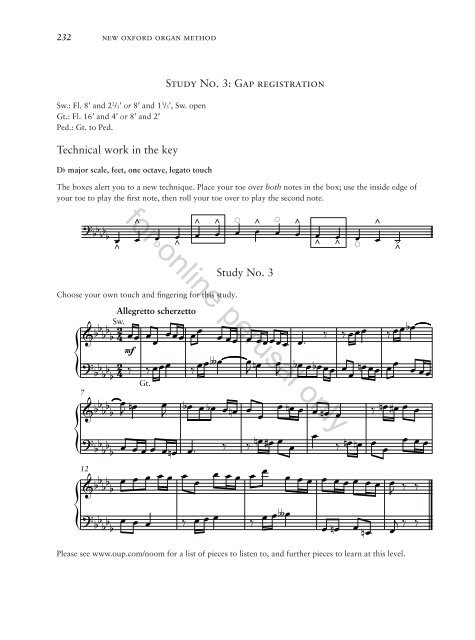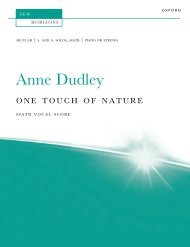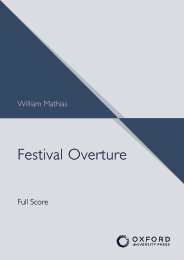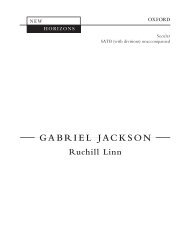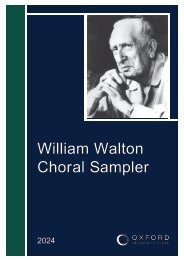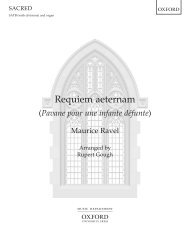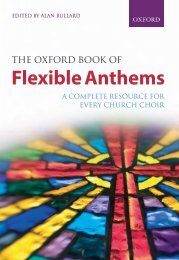New Oxford Organ Method
A single piece of repertoire is the primary focus for each chapter, with preparatory exercises providing the necessary technical work building towards the piece. Each lesson covers four main topics, which are systematically developed: practice methods, registration, fingering and pedalling, and historically-informed interpretation. The method is for keyboard players of any age who are establishing first steps at the organ with or without a teacher. It will also serve more experienced organists who want to improve their technique.
A single piece of repertoire is the primary focus for each chapter, with preparatory exercises providing the necessary technical work building towards the piece. Each lesson covers four main topics, which are systematically developed: practice methods, registration, fingering and pedalling, and historically-informed interpretation. The method is for keyboard players of any age who are establishing first steps at the organ with or without a teacher. It will also serve more experienced organists who want to improve their technique.
- No tags were found...
Create successful ePaper yourself
Turn your PDF publications into a flip-book with our unique Google optimized e-Paper software.
232 new oxford organ method<br />
Sw.: Fl. 8ʹ and 2 2 /3ʹ or 8ʹ and 1 3 /5ʹ, Sw. open<br />
Gt.: Fl. 16ʹ and 4ʹ or 8ʹ and 2ʹ<br />
Ped.: Gt. to Ped.<br />
Technical work in the key<br />
Db major scale, feet, one octave, legato touch<br />
Study No. 3: Gap registration<br />
The boxes alert you to a new technique. Place your toe over both notes in the box; use the inside edge of<br />
your toe to play the first note, then roll your toe over to play the second note.<br />
?<br />
m m m ¡ m ¡ m<br />
m<br />
b b b b b œ œ œ œ œ œ œ œ œ œ œ œ<br />
m ¡ m<br />
m m<br />
œ œ<br />
¡<br />
˙<br />
m<br />
Choose your own touch and fingering for this study.<br />
2<br />
&b b b b b 4<br />
for online perusal only<br />
Allegretto scherzetto<br />
Sw.<br />
Study No. 3<br />
œœ œ<br />
{<br />
œ<br />
œœœ œ œ œ œœ œ œœœœœ œ<br />
mf<br />
? 2 b b b b b 4 ‰ ‰ œœœ ‰ œ œ∫œ<br />
œ J nœ<br />
œ J<br />
œ<br />
Gt.<br />
7<br />
&b b b b œ<br />
b J nœ<br />
œ bœ<br />
{<br />
J œ bœ<br />
œnœ<br />
œ œ œ œ<br />
? b b b b b œ œ œ œ œnœ<br />
œ ‰ ‰ nœ<br />
œ<br />
12<br />
& bb b b b<br />
{? b b b b œ b<br />
œ œ ‰ œ œ œ ‰ œ œ∫œ<br />
‰ ‰ œœœ ‰ œœbœ<br />
b œbœœœ œ nœ<br />
œ<br />
œœ œ œ<br />
Please see www.oup.com/noom for a list of pieces to listen to, and further pieces to learn at this level.<br />
œ œœ<br />
n œ œ nœ<br />
œ ‰ nœ<br />
# œ œ œ<br />
# œ œ<br />
œ<br />
‰ nœnœ<br />
œ œ œ œ<br />
œ<br />
œ œ œ œ œ œ œ<br />
œ œ œ œ œ œ œ œ œ œ œ œ œ œ œ J ‰ ‰<br />
œ nœ<br />
œ nœ<br />
œ j ‰ ‰


